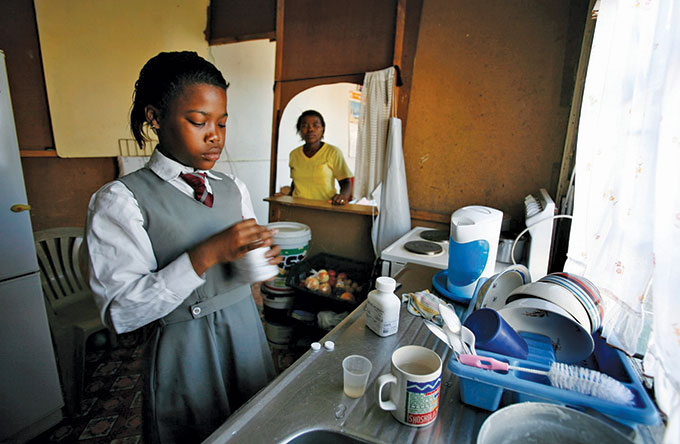Fire in the Blood
by George Sax

Edwin Cameron is a justice of South Africa’s Constitutional Court. He’s a tall, slim, 50ish man, apparently very fit (he competes in bicycle races), but 17 years ago he felt himself deathly ill, literally. As he recounts in Dylan Mohan Gray’s Fire in the Blood, he had five symptoms of terminal AIDS.
The availability of a new class of anti-retroviral drugs saved his life. But as Gray’s emotionally potent, politically incisive documentary makes terribly clear, Justice Cameron was one of a fortunate few. He could manage to buy the medical “cocktail” that virtually returned him to life, but even so it was a relatively heavy burden. The drugs took up one-third of his salary. And what of the multitudes in South Africa and elsewhere who could not hope to bear this burden? “That’s just too bad,” he says in bitter irony. “These people must die.”
And die they did. According to the movie, over approximately a decade, 10 million African people died from AIDS for want of the new, greatly more effective treatment. In this persuasive telling, the indisputable primary reason for this immense suffering and death was the refusal of giant Western pharmaceutical companies to allow these medicines to be made available. Strictly enforced patent law in the US and elsewhere was imposed on African and other developing nations. These much weaker countries were strong-armed by the companies and Western governments—chiefly that of the US—into declining to permit the manufacture and importation of greatly less expensive generic versions of these drugs, threatened with potentially crippling trade and aid sanctions if they didn’t comply. A New York Times reporter charges that the drugmakers could have made a profit at five cents a pill, but insisted on getting their customary $20-30 per dose.
As Gray’s movie also cogently argues, those ill and dying millions received almost no assistance from American AIDS advocates who had fought the companies and their government but who were indifferent or antagonistic to lifting the obstacles overseas, for reasons Gray outlines.
Fire in the Blood is more than an angry expose. It also provides a brief but penetrating review of some of the ways international post-industrial capitalism operates, the “rational” market calculations firms make.
There are righteous individuals in the movie, people who resisted and maneuvered to get around the formidable industrial rationers of medical treatment. Eventually, and much too late, the political and commercial embargo was breached through dedicated, sometimes heroic efforts.
But Gray includes a foreboding note: The drug companies fought back and achieved the protection of their asserted proprietary rights by international agencies, in order to prevent another such end run. This is likely to have damaging consequences in the future for both Third World peoples and Americans.
The film concludes with an onscreen request: “Help prevent a sequel.” It should be read while recollecting the number 10 million.
Fire in the Blood will be screened on Thursday, November 7 at 7pm, at the Dipson Eastern Hills Cinema in the Eastern Hills Mall (454 Transit Road, Williamsville).
Watch the trailer for Fire in the Blood
|
Issue Navigation> Issue Index > v12n44 (Week of Thursday, October 31) > Fire in the Blood This Week's Issue • Artvoice Daily • Artvoice TV • Events Calendar • Classifieds |









 Current Issue
Current Issue